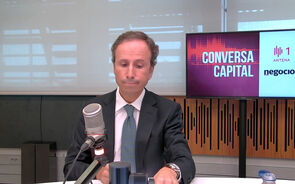How to Ruin the Stock Market - Jonathan Hoenig
1 Mensagem
|Página 1 de 1
How to Ruin the Stock Market - Jonathan Hoenig
Um artigo de opinião interessante sobre a intromissão dos reguladores no mercado.
How to Ruin the Stock Market
The Securities and Exchange Commission reports that May’s “flash crash” was precipitated by one trader’s “fat fingered” sell algorithm, which resulted in the sale of 75,000 E-Mini futures contracts on the Chicago Mercantile Exchange (CME: 263.77, -0.40, -0.15%). That’s pure bunk, especially since more than half of the supposedly destructive order was executed as the market rallied, not in advance of it’s decline.
The SEC’s explanation does however play into the administration’s long-running story line that reckless, derivative-wielding speculators, if not sharply curtailed, could collapse the economy at any moment.
Not surprisingly, the SEC’s nearly immediate response was to enact more market controls, including a rule that halts trading in any S&P 500 security that rises or falls 10 percent within a five-minute period. Recently expanded to include more than 1,000 stocks, I’m convinced this scarcely talked about regulation will cause the next market panic—not curtail it.
Let’s step back for a moment and explain why.
A few weeks ago we pointed out how trading halts, short-sale bans and other artificial limits actually contribute to market volatility, uncertainty and fear. Although volumes of research has been published on this issue, to understand it, you need only think for a moment like a profit-hungry investor rather than a power-hungry regulator.
The entire purpose of a market is to bring together buyers and sellers to discover a true market price. But if a stock is permitted to fall only 10 percent before trading is closed, what is the incentive to step in and buy shares when a stock is down 9.5 percent, thus stabilizing prices? Once trading is halted, you are unable to get out at any price. That potential shutdown is precisely what creates fright and makes investors hesitant to provide liquidity during times of market stress.
Or when short selling (in which an investor effectively bets against a particular stock) is banned by regulators, how can markets correct prices that have gotten too high or don’t reflect economic reality? Even more plainly: If short selling is banned, who then sells shares to those investors who do want to own XYZ?
One of the most obvious examples occurred back in June 2008, when regulators at the Karachi Stock Exchange tried to prop up a falling market by not only banning short selling but also instituting market circuit breakers that allowed prices to drop by only 1 percent but to rise as much as 10 percent.
After an initial spike, stocks again began to decline. Over and over, the market would hit the 1 percent loss limit and trading would stop altogether as investors would refuse to transact at the artificial level. Volume, which had been as high as 460 million shares a day the previous summer, dropped to as low as 5 million shares a day.
(Nota - > imagem mais abaixo)
And the market kept falling despite the interventions. A month later, regulators set a floor below which stocks would not be permitted to fall. Trading evaporated. On Nov. 18, the entire exchange’s volume totaled 1,500 shares, down from hundreds of millions the year prior.
When the price floor was finally lifted months later, stocks continued to plummet for two months, restricted by 5 percent daily limits. Pakistani regulators’ attempts to stabilize and instill confidence—by limiting trade and setting artificial price limits—didn’t placate the market but rather panicked it and prolonged the decline.
While such intervention might sound reckless, consider that our own government engaged in an equally suicidal scheme just a few months later when, on Sept. 18, 2008, the SEC issued an emergency order banning the short sale of 797 mostly financial stocks (later expanded to 919) to “protect the integrity and quality of the securities market and strengthen investor confidence.”
Just like in Pakistan, stocks initially rallied, with those select names on the short-selling ban list jumping the most. According to research by Professor Ekkehart Boehmer of Texas A&M University, the stocks in which short selling was banned rose by an average of 12.5 percent the day after the ban was announced and an additional 10.9 percent the day after that, far outstripping gains by the overall market. That ended up being a high that has yet to be eclipsed. As in Pakistan, reality once again asserted itself and prices began to fall. The S&P 500 ultimately dropped more than 45 percent and still trades below the level at which the ban was put in place.
At the time, those many investors who had correctly been betting against financial companies were forced to cover with losses as the market unnaturally ripped higher as a result of the new government rule.
(Nota - > imagem mais abaixo)
Regulators banned short selling, but it turns out the short sellers were right. Since Sept. 19, 2008, the day after the ban was instituted, the total return of the 919 stocks in which the SEC banned short sales has been –23.03 percent, considerably worse than the –3.49 percent return of the broad Russell 3000.
The ban failed not only to protect “the quality of the securities market” but also to “strengthen investor confidence.” Instead, it created investor panic.
The spread—the difference between the bid and ask price, which represents the cost of trading—on those stocks for which short selling was banned increased fourfold. Boehmer’s research indicates “stocks subject to the shorting ban became far less liquid during the ban period.” They also became more volatile: The stocks for which short selling was banned had a nearly 3 percent larger intraday range while the ban was in place.
Which brings us back to the May flash crash, after which, as was mentioned earlier, the SEC instituted a program that halts trading in shares that rise or fall 10 percent within five minutes. Since June, when the new rule was implemented, 10 stocks have triggered the circuit breaker, including widely owned mega-caps like Intel (INTC: 19.24, -0.53, -2.68%) (on Aug. 27), Cisco (CSCO: 23.18, +0.56, +2.47%) (July 29) and the Washington Post (WPO: 428.61, +7.97, +1.89%) (June 16). Just one week ago, shares of Progress Energy (PGN: 44.32, +0.13, +0.29%) suddenly plummeted 90 percent, triggering the circuit breaker.
The point is that the regulations designed to prevent more market crashes are now causing about two minicrashes a month. Is that what’s now considered a success?
So what’s the SEC planning next? You guessed it: Just like Pakistan, the SEC is now considering replacing the circuit breakers with a “limit-up/limit-down model,” which, according to Chairwoman Mary Schapiro, “directly prevent trades outside specified parameters, while allowing trading to continue within those parameters.” In case you’re not keeping up, that’s French for price controls.
Schapiro’s explanation, as detailed on the SEC’s website, is that the model “gives the markets an opportunity to attract new trading interest in an affected stock [and] establish a reasonable market price.” The assumption, once again, is that the same porn-loving pencil pushers at the SEC who missed Madoff or Alan Stanford or the financial meltdown as a whole know what’s “reasonable” more than those actual investors who have their own money on the line.
Reality exists. And when permitted to function, free markets accurately reflect that reality. From Karachi to New York, government schemes such as artificial price limits or bans on selling short might temporarily delay reality, but they cannot avoid it forever. By intervening in markets, bureaucrats succeed only in manufacturing the panic and unnecessary volatility they had hoped to prevent.
Read more: How to Ruin the Stock Market - Investing - Stocks - SmartMoney.com http://www.smartmoney.com/investing/sto ... z12JvL0crS
- Anexos
-
- short-sale-ban.gif (65.18 KiB) Visualizado 374 vezes
-
- comparative-total-returns.gif (40.26 KiB) Visualizado 371 vezes
1 Mensagem
|Página 1 de 1
Quem está ligado:
Utilizadores a ver este Fórum: Google [Bot], iniciado1 e 84 visitantes


